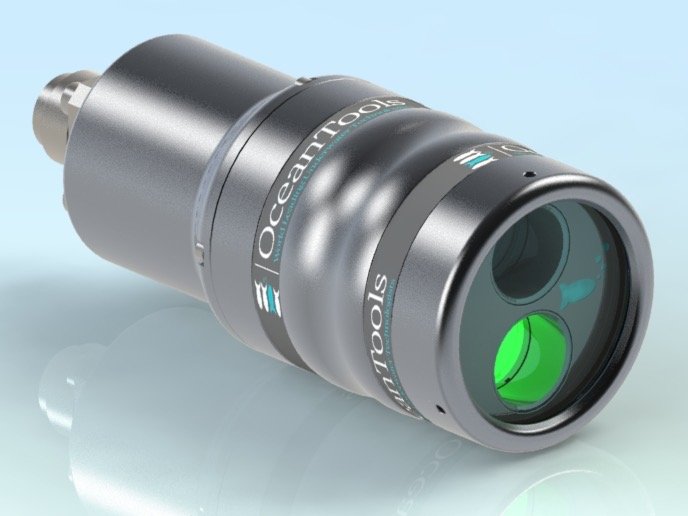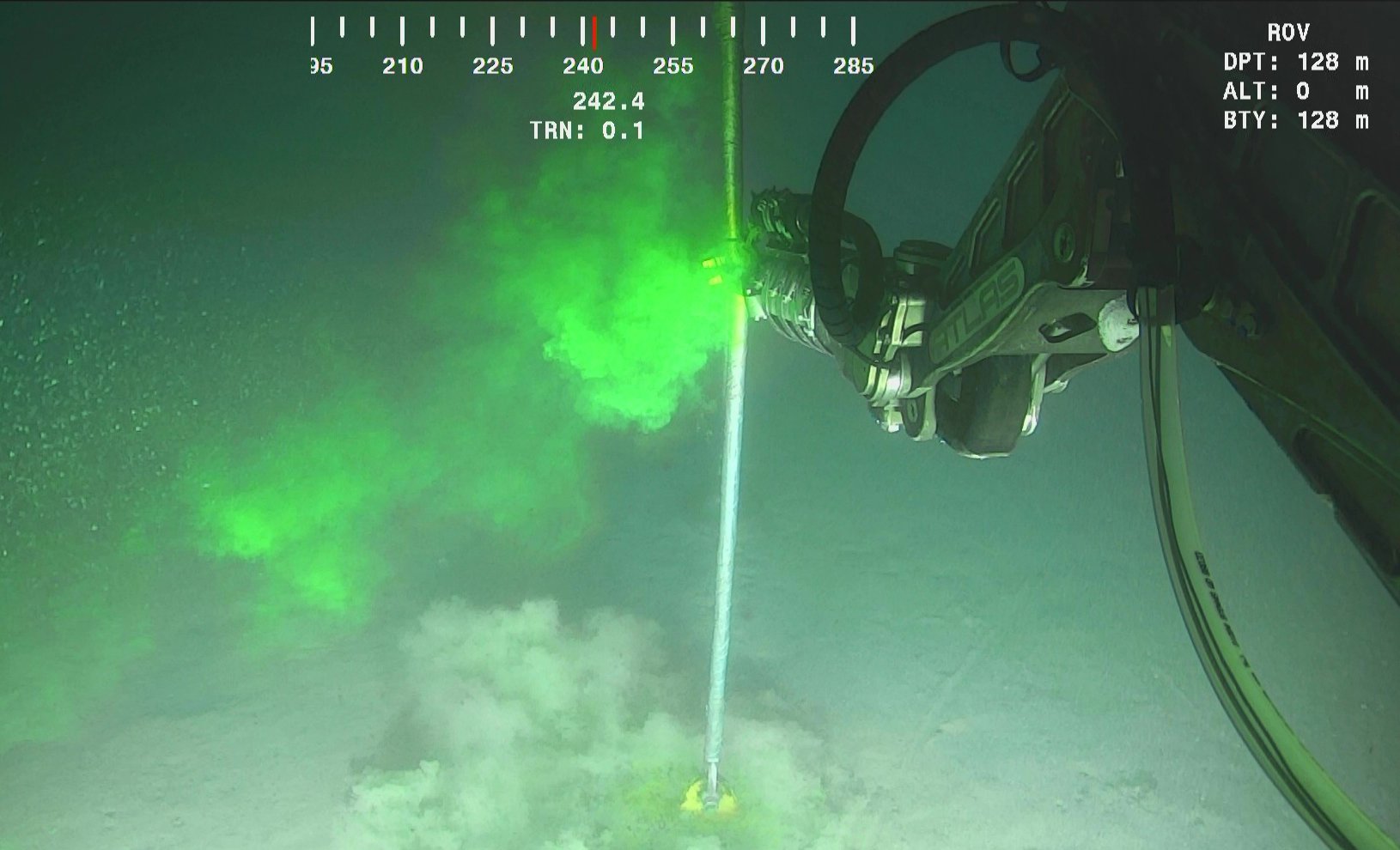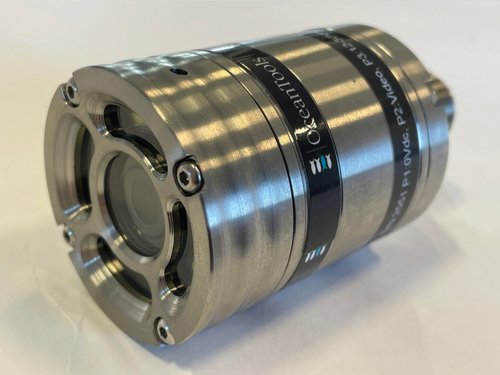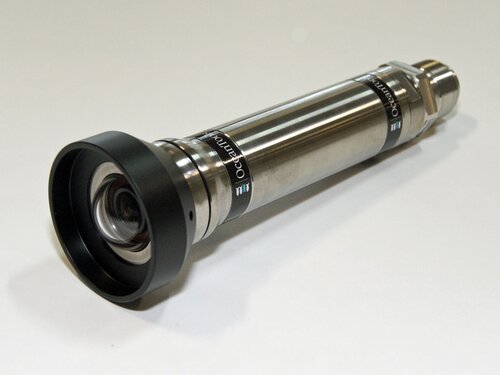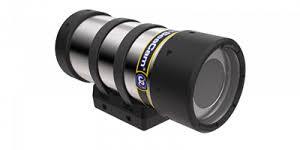BlueZone partners with over 50
world-leading original equipment
manufacturers and systems providers
D5 DyeTector
Mini subsea leak and dye detection system
The D5 DyeTector is an advanced ultra-compact subsea leak and dye detection system developed for installation on AUV systems or smaller observation class ROVs.
High-power LED light is focused through lenses and filters to create a concentrated beam that is tuned to a specific wavelength to cause maximum fluorescence of the dye. Detection electronics employ clever light amplification technology to amplify even the smallest amounts of fluorescence from the agitated dye molecules.
The powerful D5 DyeTector uses the same technology capable of detecting single photons of light as larger DyeTector units. This enables it to detect down to single digit parts per billion of dye dissolved in water and makes it ideal for detecting the very smallest of leaks or dye dosed cement. Advanced ambient light suppression technology allows the DyeTector to be used in high levels of background light.
The D5 DyeTector has been specifically designed for installation on AUV systems, with free-running data and low-power electronics to reflect the increasing use of AUVs for pipeline surveys. It can also be deployed on smaller observation class ROVs, with simple and intuitive DyeTection software to display detection data at the surface.
Key Features:
-
Rhodamine, Fluorescein or Ultraviolet dye detection
-
Compact design for AUVs or small ROVs
-
Same powerful DyeTector technology as larger units
-
Configurable serial control or free-running data output
-
1000m standard depth rating
Subsea infrastructure
A DyeTector may be used to detect leaks from subsea infrastructure such as manifolds, wellheads or pipelines if a suitable dye has been added to the infrastructure fluids. Pipeline or flow line pressure testing can be monitored by the DyeTector if dye impregnated fluids are used.
Cement detection
A DyeTector may also be used during casing cementing operations to detect cement returns if a tracer dye is added to either the seawater spacer or to the cement itself. Unlike pH meters which rely upon the cement passing over them, a DyeTector can detect cement from a distance of several meters depending on the concentration of dye.
Detection dyes
Versions of the DyeTector are designed to detect several types of dye or fluid in addition to C-Dye 530 (Rhodamine) and C-Dye 370 (Ultraviolet) including:
-
Rhodamine dyes such as B275, RX9022, Pelagic 100 Pink
-
Fluorescein dyes such as HW443, HW540P, Oceanic Yellow LTF
-
Ultraviolet dyes such as RX9026E, Pelagic 100, Champion Cleardye, Castrol HT2
List of Detectable Dyes and Fluids
For more information about OceanTools D5 DyeTector, Contact the team at BlueZone.
Key Features
Up to 25-hour mission duration
Speeds up to 4.2 knots
Increased module payload capacity
Search and recovery
Hydrography
Deep sea mineral exploration
Marine & Fisheries research
Product Enquiry
Related products
OceanTools C7 Light Ring Camera
The C7 range of multipurpose subsea observation cameras have an integral high intensity controllable light ring to illuminate the underwater environment, and a Wide Dynamic Range to provide clear video...
Read moreOceanTools C3 Compact Subsea Camera
The C3 range of ultra-compact subsea tooling cameras offer high quality video in low light level conditions, with low power consumption. The cost-effective cameras have been designed to be as...
Read moreDeepSea's HD Zoom SeaCam has a 30x optical zoom capability, faceplate illumination of 0.024 Lux, and high-quality HD-SDI 1080p/30 video output. Options include a titanium or an aluminum housing.
Read moreRelated Articles
Ahead of the Tide: BlueZone’s Landmark IndoPAC 2025 Showcase
Celebrating 25 Years of Sovereign Capability The Indo Pacific International Maritime Exposition stands as the region’s premier showcase for commercial maritime and naval defence innovation—bringing together leaders from defence,...
Read MorePartnering for Performance: BlueZone Supports Kraken Robotics in Advancing KATFISH Capability
BlueZone Group to become Kraken’s Australian Sales Representative, Enhancing Sovereign Support for Cutting-edge Synthetic Aperture Sonar Systems We are thrilled to announce BlueZone Group have signed an agreement...
Read MoreSeeByte and BlueZone Group Forge Strategic Alliance to Strengthen Australian Naval Capabilities
BlueZone Group is proud to announce our appointment as the official Australian representative for SeeByte, a UK-based leader in advanced maritime defence and uncrewed systems technology. This strategic partnership marks...
Read More
